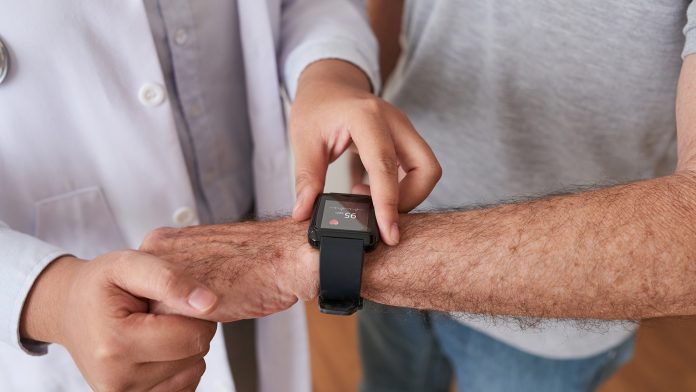
NICE has recommended five technologies that can help monitor people with Parkinson’s disease, improving symptom management and quality of life.
Wearable devices with sensors that monitor the symptoms of people with Parkinson’s disease are useful for managing day-to-day symptoms. These devices can more accurately record a person’s symptoms, as opposed to a clinical assessment during in-person appointments, helping inform medication decisions and follow-up treatment such as physiotherapy.
The National Institute of Health and Care Excellence has recommended that the NHS collects real-world evidence of five technologies that use wearable sensors to monitor people with Parkinson’s disease.
Mark Chapman, interim director of Medical Technology at NICE, said: “Providing wearable technology to people with Parkinson’s disease could have a transformative effect on their care and lead to changes in their treatment taking place more quickly.
“However, there is uncertainty in the evidence at present on these five promising technologies, which is why the committee has conditionally recommended their use by the NHS while data is collected to eliminate these evidence gaps.
“We are committed to balancing the best care with value for money, delivering both for individuals and society as a whole, while at the same time driving innovation into the hands of health and care professionals to enable best practice.”
What is Parkinson’s disease?
Parkinson’s disease causes involuntary shaking of particular parts of the body, slow movement and stiff, inflexible muscles. It is caused by a loss of nerve cells in the substantia nigra, reducing the chemical called dopamine in the brain.
It affects around one in 500 people, and it is currently treated with physiotherapy, medication and sometimes, brain surgery.
Five new wearable technologies
NICE’s independent diagnostic advisory committee has recommended the NHS collects real-world evidence on five technologies. These include:
- The Personal KinetiGraph (PKG) Movement Recording System (Global Kinetics Corporation): This is a watch that measures movement. It is intended to quantify movement disorder symptoms, including tremors, involuntary movement, and slowness. It has event markers for medication reminders and patient acknowledgement. It is intended to be used to monitor activity associated with movement during sleep.
- STAT-ON (Sense4care): A waist-worn inertia recorder, configured by a doctor. It measures motor disorders and events when worn by someone with Parkinson’s disease but does not measure tremors. The device also measures involuntary movement, how people walk, falls, energy expenditure and posture. It can also register when medication has been taken with up to ten alarms per day to act as a prompt. The user is required to wear the system for a minimum of 24 hours over five days to generate enough data.
- Kinesia 360 (Great Lakes Neurotechnologies): This device monitors physical motion and muscle activity to analyse how people can move and how their condition is progressing. Sensors worn on the wrist and ankle combined with a mobile phone app record data, including involuntary movement and tremors. The sensors record data all day and recharge overnight for extended home use. The app also includes electronic diaries for capturing patient-reported outcomes and customisable medication diaries.
- PDMonitor (PD Neurotechnology): This system measures activity/posture, slowness, gait disturbances, freezing of gait, wrist tremor, leg tremor, involuntary movement and one and off periods. The device is worn on both wrists, ankles and waist to monitor movement data for assessing motor symptoms.
























